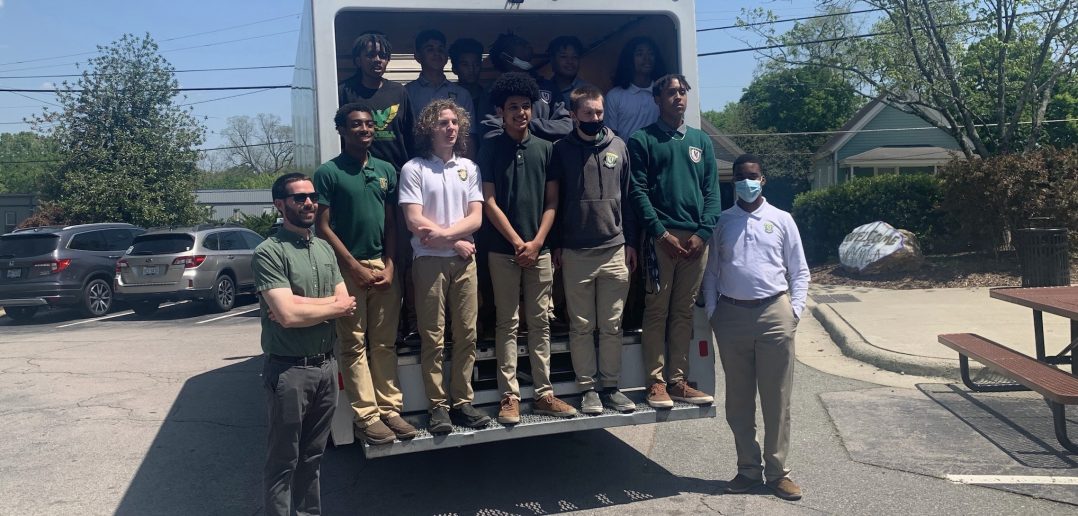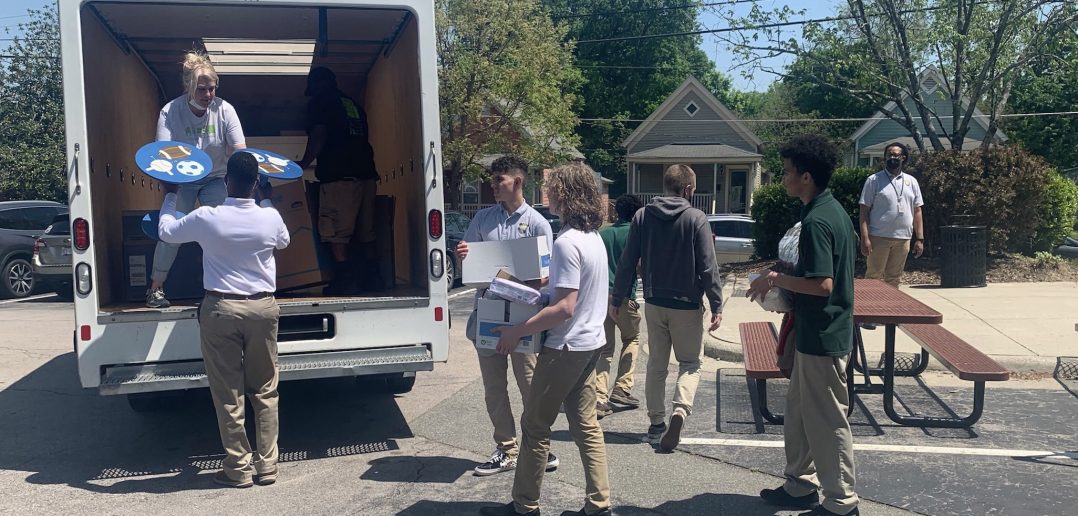Six scholars from North Carolina A&T State University in technology– or STEM-focused majors helped foster the next generation of data-literate students while also donating to those in need.
SAS recently facilitated a donation drive with students from the Wake County Young Men's Leadership Academy (WYMLA) in Raleigh, North Carolina and scholars from SAS' HBCU Academic Excellence Program in partnership with North Carolina A&T State University. The drive supported non-profit organization The Green Chair Project (GCP) and their Sweeter Dreams Beds program.
Volunteers helped the scholars teach the younger students how to utilize data throughout the donation process and turn it into a “data drive” by asking data-driven questions upfront to better identify the problem, understand the beneficiary and ultimately solicit items that best meet the need.
Learning the value of data
The NC A&T students are part of a pilot program of mentorship with SAS employees who are HBCU alums. The group led the WYMLA students in a month-long initiative to introduce them to the value of data. To prepare them, SAS’ Social Innovation team held a workshop to introduce the concept of data drives.
Scholars learned that data-driven questions and goals are at the heart of these drives and are what make it possible to put need over quantity in an effective way. The college students also got a mentorship opportunity of their own as they trained the students, learning essential project management skills like effective communication, collaboration, delegating tasks, managing deadlines and how to lead scrums.
“As an Aggie and a mentor in the HBCU Academic Excellence Program, I’m excited to see this sort of ‘each one teach one’ approach to introduce people to SAS at an early age,” says SAS employee Robert L. Anderson. “That positive initial impression will follow each of these students as they embark on their career journeys.”
Putting the data in the drive
As mentors to Stuart Gordon’s sophomore seminar leadership class, the HBCU scholars set the expectations and parameters of the drive. They met with the students on two occasions to lead presentations guiding students through scenarios that highlight the value of data in everyday events – like deciding what to wear due to weather forecasts or ordering the right number of boxed lunches for a meeting.
Scholars showed the students how to write data-driven questions by role-playing a beneficiary and having the students consider what they’d want to know and what questions they would ask. In this case, it was in the context of The Green Chair Project, which helps people suffering from homelessness, crisis or disaster – including more than 6,000 children in Wake County sleeping on floors or in shared, crowded beds.
After an overview and discussion of the mission of the organization, Rae Marie Czuhai, development director for GCP, and Graham Satisky, director of guest experience, answered students’ data-driven questions: What are popular donation items? What ages do you serve? Are there particular sizes you need?
The answers helped the students better understand what kinds of donation items GCP needs – in this case, an emphasis on twin-sized sheets and new pillows – and prioritize those items. Students then created a set of SMART goals for the data drive, and they worked in teams – internal marketing, logistics and community engagement – to outline their goals and how they would accomplish them.
Beyond the bed sheets
After weekly check-ins and scrums conducted by the HBCU scholars, the WYMLA students concluded the drive by providing GCP with 70 donated items that fit their specific needs and offering a summary of the process. Czuhai, the GCP development director, noted that the data-driven approach yielded donations that would all be used with no waste.
“The donation drive made me think about things that I take for granted,” said Julian, one of the WYMLA participants. “It was eye-opening to see how fortunate I was because I had bed sheets.”
Beyond the donations themselves, the data drive yielded some other important lessons. First, paying knowledge forward can have life-long benefits. And second, bringing a data-focused outlook to problem-solving of any kind can have a greater impact than just trying to do well alone.
How can you set up a data drive?
- Find a beneficiary: Does your school or organization already have a donation or charity drive in place?Expand on it. Opting to begin with a local organization can be a great start.
- Introduce the data drive concept – the value of data, data-driven questions …
- To better understand the needs of the beneficiary and their recipients, ask data-driven questions.
- Determine a problem or need.
- Create SMART goals.
- Set the scope and sequence of the drive – timeline, check-ins and parameters of collection week.
- Present the outcomes to the beneficiary – share data.
- Complete a retrospective and/or surveys to learn what went well and what to improve on.
Building a data literate future means taking everyday events and exploring the potential impact of data behind them. Putting that belief to work as part of a donation drive provides the chance for a double dose of good.
Check out more ways SAS is showcasing the value of data and analytics.



